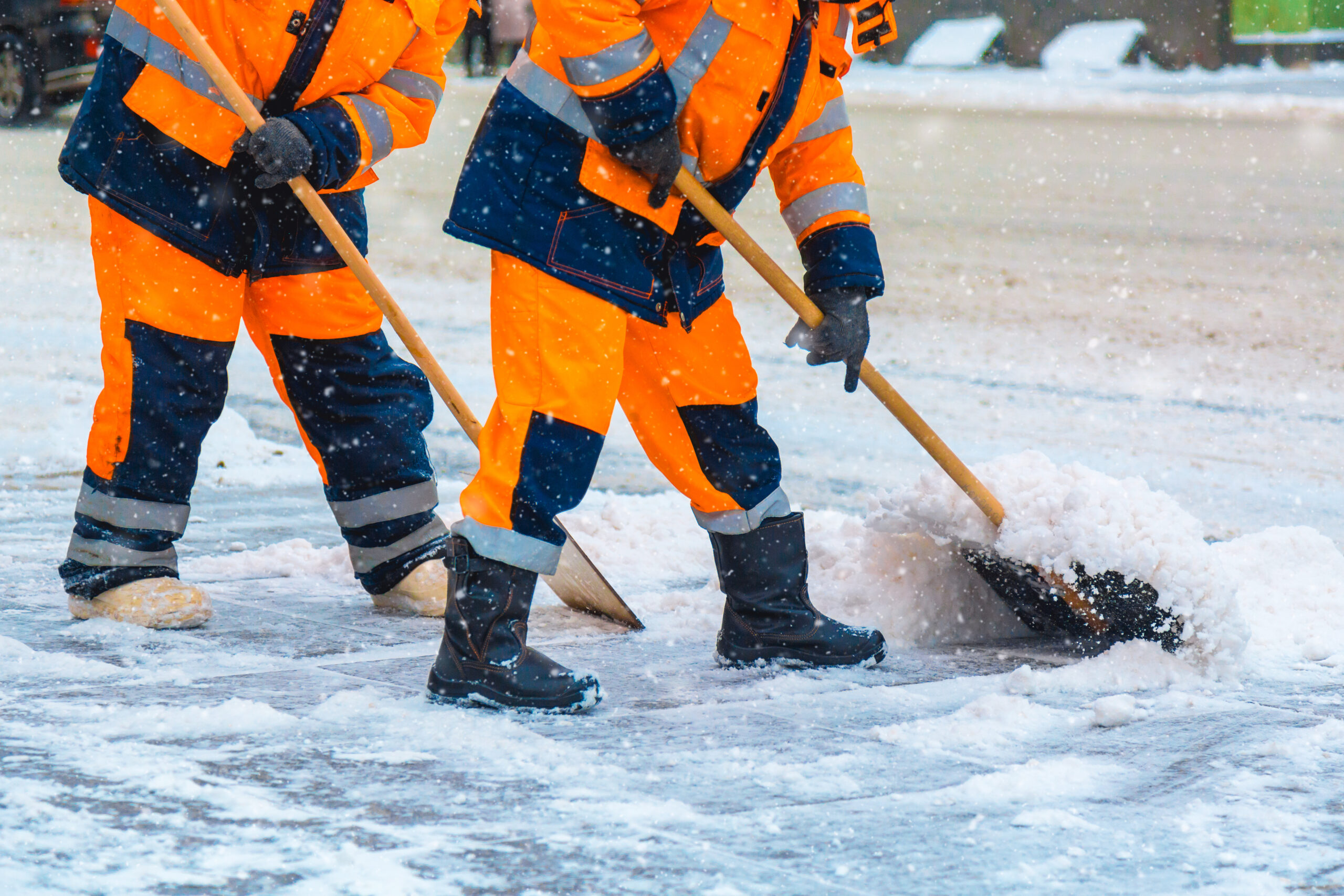With the winter months now upon us, an essential discussion arises: How can we ensure the safety and well-being of employees who spend extensive time outdoors? And how about employees who feel the need to work even when ill?
The harsh cold and icy conditions pose more than discomfort – they present a number of safety risks that employers must address. With injuries, illnesses and presenteeism (attending work while unwell), the cold season poses unsafe conditions for workers.
Outdoor hazards to keep an eye on
Prolonged exposure to cold temperatures can have severe consequences for employees, ranging from serious ailments to potentially death. Injuries and illnesses associated with extreme cold are among the potential risks for workers.
Employers should consider the following conditions:
- Frostbite occurs when the skin is exposed to cold or windy weather or comes into contact with freezing objects or surfaces. Common symptoms include numbness of exposed skin; red skin with gray, white or bluish patches; hardened skin; and skin that blisters after being warmed.
- Hypothermia occurs when your body temperature drops below 95 degrees Fahrenheit. Symptoms include shivering, confusion, brain fog, slow breathing, low energy or fatigue, bright red skin, loss of coordination and slurred speech.
- Trench foot occurs when the foot becomes exposed to wet and cold temperatures for a prolonged period. Common symptoms include swelling and numbness, cold, blotchy and red skin, itching or burning sensations in the foot, and a feeling of heaviness in the appendage.
All employees who can’t avoid working outdoors in cold temperatures may be at risk of these ailments.
It’s important to note that the likelihood of cold weather-related injuries and illnesses may be heightened among workers who take certain medications, are in poor physical condition or have specific health problems (e.g., diabetes, high blood pressure and heart disease).
Become proactive
Taking proactive steps to ensure the well-being of employees in such conditions is crucial for maintaining a safe and healthy work environment. To keep employees safe while working in cold weather, consider the following tips:
- Wear several layers of loose clothing.
- Ensure your ears, face, hands and feet are protected.
- Wear waterproof and insulated boots.
- Take frequent, short breaks in warm areas.
- Drink hot beverages and eat warm, high-calorie foods before working and during breaks.
- Learn the signs and symptoms of cold weather-related ailments to help identify them in yourself and among co-workers on the job.
While focusing on these physical remedies to prevent cold weather-related ailments is essential, equally important is addressing the invisible threat that exacerbates these risks – presenteeism. This issue not only hampers productivity but also makes the workplace a potential hub for spreading sickness.
Presenteeism (Working while sick)
Presenteeism in the workplace occurs when employees come to work despite feeling tired or unwell. Employees who fear losing their job or missing out on career opportunities can suffer from this phenomenon. They would rather come to work or refuse to take paid time off. It is also common among older workers, workers suffering with insomnia or mental health issues (e.g., anxiety and depression) and those with unhealthy lifestyles.
Presenteeism can be caused by poor workplace culture. When employees feel their work can’t be easily transferred or covered without consequences to quality, completion times or interpersonal relationships, they are more likely to suffer through their illness.
According to the Institution of Occupational Safety and Health, presenteeism can lead to the following issues in workers:
- Increased stress and fatigue
- Worsened mental health
- Lowered morale and cognitive function
- Increased recovery time after injuries and illnesses
Furthermore, presenteeism can increase the risk of near-misses and accidents on the job. There is a potential additional risk for employees who suffer from presenteeism. With unsafe conditions at a site, there can be significant workplace safety concerns.
Presenteeism prevention
When devising a plan to prevent presenteeism, employers should carefully assess their workplace environment. If an employee feels at ease in their role, they are more likely to take sick days without facing stigma or the fear of consequences. This can have a positive impact on morale and greatly diminish the risk of presenteeism.
Employers should consider the following for their employees:
- Encourage employees to stay home when they are ill.
- Ensure PTO and sick leave policies are fair and communicated.
- Consider modifying an employee’s work schedule to better fit their needs.
- Encourage a well-balanced, low-fat diet and regular exercise to keep body and mind healthy.
- Promote a healthy work-life balance.
Winter weather poses a significant threat to workers, with the risk of serious injuries and illnesses increasing substantially. Employers should ensure that appropriate measures are taken to protect employees from these risks. It is also important to address the issue of presenteeism, as it not only hampers productivity but also poses safety concerns in the workplace.
By promoting a healthy work culture and providing necessary resources and support, employers can combat these risks and ensure a safe and productive work environment for all employees.

